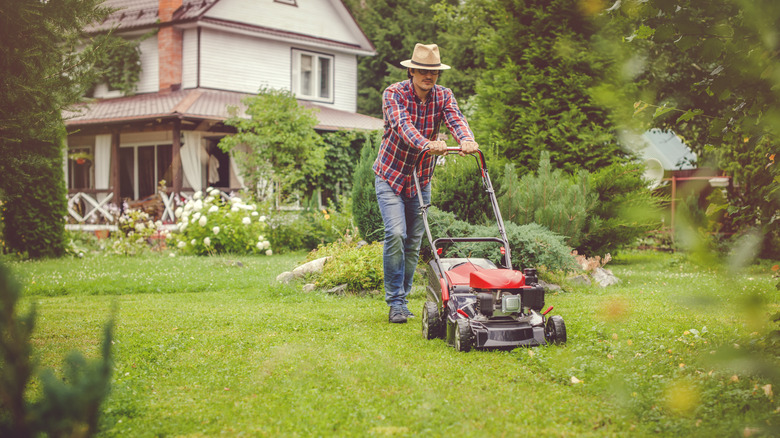If you live in the South, you’ve probably heard of rescuegrass and it may be appearing in your yard right now. Rescuegrass is a cool-season grass that tends to pop up in the winter and usually disappears by summertime when temperatures start to warm. The fast-growing grass is considered invasive and thrives in southern region states such as Texas — you can identify it by its flattened spiky blades that have somewhat of a hairy appearance on top which can reach up to 14 inches in length. If the grassy weeds go to seed, they can spread quickly.
While some of us might just want to surrender to the pesky grass because it seems to reappear again and again, perhaps a better idea might be to put in some extra work so it will be gone for good. There can be many reasons you might have rescuegrass in the first place, from dead spots on your lawn to an irregular mowing schedule to just not catching the weeds before they go to seed. With all that in mind, the best way to keep the weeds under control is really quite old-fashioned — keep a regular mowing schedule.
Mow grass regularly before pulling rescuegrass from ground

Mowing your lawn can do wonders in your quest to put rescuegrass behind you. Trimming your lawn helps keep the invasive grass short and stunts its growth, which is key to preventing rescuegrass from reaching the flowering stage when it produces seeds. However, if it already started to flower, mowing can be counterproductive and may spread the seeds even more and increase the overall issue. So be mindful about the right way to mow if you don’t want weeds to take over. By doing so, you will buy yourself some time to pull the weeds out of the ground before they multiply.
Pulling weeds out by the roots is one of the best ways to keep them from coming back. Rescuegrass can sprout again if the root system is left in the soil, so it’s important to pull the roots to minimize the chances of regrowth. Weed pullers can give you the advantage of getting a nice grasp of the weed structure’s base and lifting it all from the ground in one piece so they do not sprout up again next year.
Maintain lawn care and apply an organic pre-emergent herbicide
There are a number of natural solutions you can try that will help keep the grassy weeds from emerging. First off, it is important to take care of your lawn throughout the year and have a regular mowing schedule to encourage healthy grass growth. Practices such as aeration, frequent fertilization, and keeping your lawn moist and hydrated with proper irrigation can help a great deal. Rescuegrass tends to thrive in dry soil. Also, overseeding to thicken your lawn helps prevent weeds from taking hold because healthy grass will outcompete weeds.
Another suggestion is to lay down an organic pre-emergent herbicide. Pre-emergent herbicides are applied to the ground before weeds appear and create a barrier in the soil that prevents weed seeds from establishing. In the case of rescuegrass, it is recommended to apply the solution in the fall.
And lastly, if you feel like you cannot get ahead of the problem this season, there’s some good news: nature is most definitely on your side. As soon as temperatures warm, rescuegrass tends to die back. While this is great, the feeling of relief will not last for very long given the grassy weeds will reappear in a year. So keep the steps above in mind for next season!